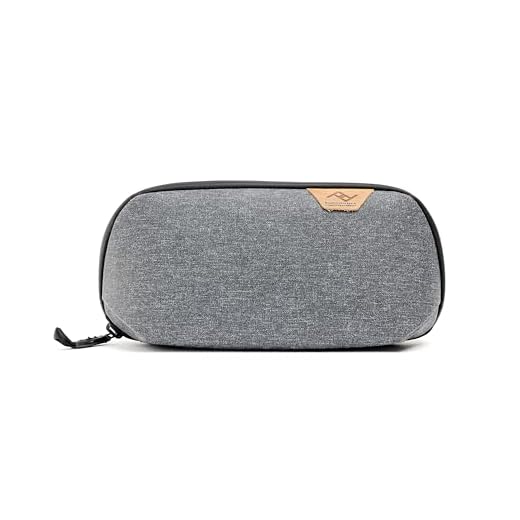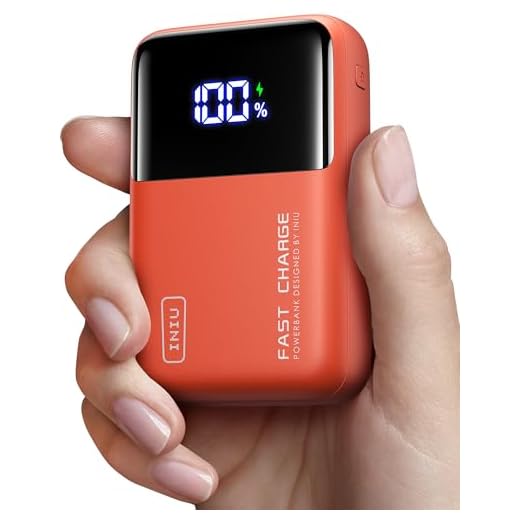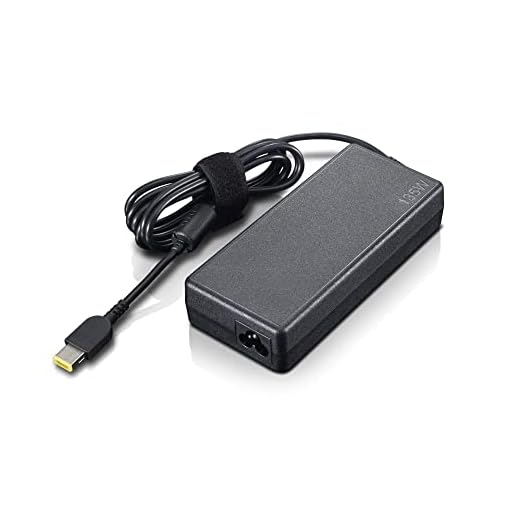



Recommendation: Stow AC adapters and laptop power bricks with carry-on items; keep spare lithium-ion batteries and portable power banks in the cabin only and avoid placing loose battery units in the aircraft hold.
Regulatory specifics: IATA/ICAO guidance and most national aviation authorities prohibit spare lithium batteries in hold baggage. Batteries that are installed inside devices are generally permitted in the hold, though many carriers prefer devices carried into the cabin. Capacity thresholds: up to 100 Wh allowed in cabin without approval; 100–160 Wh require airline approval and are typically limited to two spare units per passenger; greater than 160 Wh is prohibited on passenger flights. Convert capacity: Wh = (mAh/1000) × V (example: 10,000 mAh at 3.7 V ≈ 37 Wh).
Practical handling: keep adapters and bricks in carry-on to reduce theft risk and allow crew access if a fault arises; secure cords in a padded pouch and protect AC prongs. For spare batteries and portable power banks, insulate exposed terminals with tape or use original/dedicated packaging; carry documentation showing Wh rating when markings are unclear.
Pre-flight actions: verify the specific airline policy and national rules for departure and transit airports; request written approval for items rated 100–160 Wh before travel; declare high-capacity units at check-in when required to avoid confiscation or denied boarding.
Airlines and regulators that allow laptop power adapters in hold baggage
Short answer: most major carriers and aviation authorities permit laptop power supplies installed in devices to travel in the aircraft hold, but portable battery banks and spare lithium-ion cells are required to remain in the cabin; batteries between 100 Wh and 160 Wh require airline approval and items above 160 Wh are generally not accepted for passenger transport.
Regulatory positions: IATA’s Dangerous Goods Regulations set the baseline used by airlines worldwide – ≤100 Wh: allowed in carry-on without approval; 100–160 Wh: airline approval required and limited quantity; >160 Wh: normally prohibited for passengers. The FAA/TSA (US), EASA (EU), ICAO, Transport Canada and UK CAA all follow the same Wh thresholds and the principle that spare lithium batteries and power banks must travel in the cabin.
Airline specifics (representative policies): American Airlines, Delta, United – follow FAA/TSA rules: spare lithium cells and power banks are permitted only in carry-on; installed batteries may be accepted in hold at carrier discretion; 100–160 Wh needs approval. British Airways and Air France–KLM – spare batteries and power banks prohibited in the hold and must be carried in the cabin; carry documentation of Wh rating if requested. Lufthansa – allows devices with installed batteries in the hold but strongly recommends cabin carriage; spare cells and power banks only in cabin and must be labelled. Emirates and Qatar Airways – explicitly ban portable battery banks from the aircraft hold; cabin only. Qantas and Air Canada – spare lithium batteries and power banks restricted to carry-on; 100–160 Wh items require prior approval.
Practical data and steps: always check the airline’s “dangerous goods” or battery policy page before travel; verify the Wh rating (Wh = (mAh × V) / 1000) printed on the battery or power bank; if rating is not shown, obtain manufacturer confirmation. For 100–160 Wh items request formal approval from the carrier in advance and expect limits on quantity (often two spares). Insulate terminals or place batteries in original packaging; declare high‑capacity items at check‑in if approval was granted. If in doubt, move power banks and spare cells to the cabin – that aligns with both regulator text and most carrier policies.
How to handle chargers paired with removable lithium batteries or power banks
Keep all removable lithium cells and portable battery packs with their power adapters in carry-on bags; do not place them in the aircraft hold.
If the cell can remain inside the device, leave it installed. If removal is necessary, cover exposed terminals with non-conductive tape, place each battery or power bank in its original packaging or an individual plastic pouch, and separate batteries from metal objects and other conductive materials.
Use the following numeric rules: cells rated under 100 Wh are normally allowed in the cabin without airline approval; cells between 100 Wh and 160 Wh require airline permission and are limited to two spare units per passenger; cells greater than 160 Wh are prohibited on passenger aircraft. Treat external battery packs (power banks) as spare batteries for these limits.
When Wh rating is missing, convert from mAh: Wh = (mAh × V) / 1000. Example: 5000 mAh at 3.7 V equals 18.5 Wh. If voltage is not printed, consult the manufacturer documentation or search the model number before travel.
For adapters that include an internal removable battery or attachable power module, separate the module and follow the spare-battery handling above. Protect exposed USB or barrel connectors with caps or tape to prevent short circuits and place units in a padded pouch to avoid damage during security screening.
If transporting multiple spares or any item within the 100–160 Wh band, declare them at airline check-in and keep documentation (manufacturer label, spec sheet). Use compact, accessible carry solutions such as a dedicated organizer inside a best soccer backpack or a small tech pouch in one of the best waist packs for camera to keep batteries separate from clothing and toiletries.
For unrelated legal questions that may affect travel or guardianship, see how can a father relinquish his parental rights.
How to stow power adapters to prevent short circuits, overheating and physical damage
Insulate exposed prongs with high‑adhesion electrical tape and place each power adapter in an individual non-conductive zip bag or molded plastic cap to eliminate contact with metal objects.
Step-by-step procedure
1) Cover plug pins and any exposed conductors with electrical tape or a purpose-made plastic cap; avoid using bare aluminum foil or conductive materials.
2) Coil cords into loose loops with a minimum loop diameter of 4–6 cm; keep bends away from the connector strain relief and secure with a Velcro strap or reusable cable tie – adhesive tape on the cable jacket is discouraged.
3) Put each adapter assembly inside a padded pouch or compartmentalized hard case; place thin closed-cell foam (5–10 mm) around the brick and 10–15 mm between adapters to absorb impacts and prevent connector contact.
4) Keep vented adapter faces unobstructed: do not cover vents with tape, clothing or dense insulation; maintain ~5–10 mm clearance on vented surfaces to reduce heat buildup.
5) Separate adapters from loose metal items (coins, keys, pens, jewelry) and from sharp objects by using internal pockets, zip bags, or molded trays.
6) Position adapter units where they will not be crushed under heavy items: top layer inside a carry compartment or inside a rigid case; avoid placing beneath dense gear that can compress padding.
Materials, handling limits and quick checklist
Use: electrical tape, silicone plug covers, heat-shrink tubing for permanently exposed pins, padded pouches, EVA foam inserts, rigid plastic or hard-sided cases. Avoid: loose wrapping that traps heat (thick sweaters, sealed insulated envelopes) and direct contact with sharp edges.
Temperature guideline: aim to keep items within roughly −20°C to +60°C during transport and storage; prolonged exposure above +60°C increases risk of internal damage and thermal events.
Quick checklist: prongs insulated; each adapter individually bagged or capped; cords looped (4–6 cm) and tied; vents clear (5–10 mm); adapters in padded or hard case; separated from metal objects; stored where not crushed.
What to expect during security screening and how to respond if an adapter is inspected or confiscated
Present adapters and cords separately in screening trays; power down attached devices, remove removable batteries, and have receipts or serial numbers ready for inspection.
- Typical screening steps
- X‑ray image review followed by visual inspection of items with dense or unusual signatures.
- Manual handling: agents may unwrap, test connectors, or isolate exposed terminals for closer examination.
- Explosive trace detection (swab) of items and trays when suspicious residues are detected.
- Requests to demonstrate that an item is not a functioning battery pack–this sometimes involves powering an associated device, not the adapter itself.
- Referral to a secondary inspection area if the item appears modified, has exposed wiring, or contains an integrated battery.
- Immediate responses during inspection
- Comply with inspection requests and hand over the item from its bag or case when asked.
- Provide proof of purchase, manufacturer documentation, or a photo of the original product label to verify model and specifications.
- Point out manufacturer labels (input/output ratings, safety approvals) if visible; avoid forcing open sealed units.
- Request a supervisor if the reason for secondary screening is unclear or if communication barriers exist.
- Obtain a written or electronic record of any agent statements regarding the item’s status at the time of inspection.
- Procedures if an item is retained or confiscated
- Request a property receipt before leaving the checkpoint; the receipt should include agent name/ID, time, location, and a brief reason for retention.
- Photograph the item and surrounding packaging prior to surrender when possible; record serial numbers and model identifiers aloud for the record.
- Ask which authority or regulation was cited as justification; note the specific citation or policy reference provided by staff.
- Obtain contact details for the airport’s lost & found and the airline’s customer service desk; note any reference or claim number supplied.
- If the item is declared hazardous and destroyed, request written confirmation explaining the disposal and the chain of custody.
- After the incident: documentation and recovery options
- File a formal report with the airline and the airport authority within 24–48 hours; attach photos, receipts, property receipt, and flight details.
- Initiate a claim for reimbursement if purchase proof exists and the airline or airport policy indicates compensation eligibility; follow published claim procedures and deadlines.
- When a regulatory agency is involved (for example, national aviation security), submit a complaint using that agency’s online form and include all supporting documentation.
- For high‑value items, notify the payment provider or insurer with the claim number and supporting evidence; retain originals of all documents until resolution.
- If recourse is denied, escalate to a supervisory or ombudsman office and keep a clear timeline of all contacts and responses for dispute resolution.
- What to avoid at the checkpoint
- Do not conceal the item in other bags or attempt to bypass inspection; that increases the likelihood of seizure and denial of recovery.
- Avoid altering or opening a sealed or tagged item after an agent marks it; tampering complicates recovery or appeal.
- Refrain from aggressive confrontation; request polite escalation to a supervisor and document the interaction instead.
Practical alternatives: shipping, carrying on, and accessing power adapters after bag drop
Immediate recommendation
Keep at least one laptop power adapter in a carry-on or personal item; ship extra units ahead via a tracked courier when multiple adapters or replacements are needed.
Shipping – fastest reliable options and how to prepare
Choose the service: domestic ground 2–5 business days, express overnight 1 day, international priority 3–7 days; typical costs range roughly $10–40 (domestic ground), $40–120 (overnight or international) depending on weight and distance. Use a reputable carrier with door-to-door tracking and insurance.
Packing and labelling: use a small corrugated box (~20×10×5 cm) with 20–40 mm foam or bubble wrap around the adapter; wrap exposed prongs with electrical tape and place into a sealed pouch; mark contents as “electronic accessory – no batteries” if the unit has no integrated battery. Include a simple invoice for customs when shipping internationally.
Timing and cost trade-offs: book shipment at least 3 business days before departure for domestic delivery; international shipments should be allowed 7–14 business days to avoid rush fees. For one-off urgent needs, street-price comparison: airport retail typically sells universal laptop adapters $35–120; express shipping is often similar or higher.
Note: if the adapter contains an internal battery or is bundled with a power bank, verify carrier rules and restrictions before tendering the parcel.
Carry-on organisation and quick-access tactics
Placement: store the adapter in a front-pocket or an external zipped pouch of a cabin bag so it is reachable after check-in and before boarding. Keep a short spare USB(-C) cable in an inner jacket or trouser pocket for emergency charging at terminals.
Protection and readiness: use a small padded sleeve or cable organiser to prevent connector damage and tangling; insulate metal contacts with tape or a small silicone cap to avoid shorting against coins or keys.
Alternatives at destination and at the airport: purchase replacements at terminal electronics retailers (typical business-chain names vary by airport), use airport charging stations/USB hubs located near gates, request loaner adapters from hotel reception, or rent a unit from device rental kiosks where available. For business trips, request a spare from workplace IT before travel or arrange courier delivery to the arrival address or hotel for guaranteed access upon landing.
FAQ:
Can I put my laptop charger in checked baggage?
Yes. A charger or power brick that does not contain a battery can be placed in checked luggage. The bigger safety concern is spare lithium batteries, which airlines and authorities generally require to be carried in the cabin. If your charger is part of the laptop or has no internal battery cells, it is allowed in checked baggage, but packing it in carry-on is safer to prevent loss or damage.
What about power banks and chargers with built-in batteries — can those go in checked luggage?
Power banks and any charger that contains a lithium battery are treated as batteries, not just accessories. Most international and U.S. rules require them to be in carry-on baggage only. There are limits based on watt-hours: small batteries (typically up to 100 Wh) are normally permitted in the cabin, batteries between about 100 Wh and 160 Wh usually need airline approval, and larger cells are often prohibited. Check the watt-hour rating printed on the device and confirm the airline’s policy before travel.
Could packing chargers in checked luggage cause a fire risk?
Plain chargers and power cords are low-risk items. The main fire hazard stems from damaged or loose lithium batteries. If a battery is shorted or crushed in checked baggage, it can overheat and ignite. To reduce risk, keep spare batteries in carry-on, protect charger prongs and connectors, and avoid packing devices with loose or swollen batteries in checked bags. Wrapping cords and placing small electronics in protective pouches helps prevent crushing and short circuits.
My charger was lost or damaged in checked baggage. What steps should I take to make a claim?
Report the problem to the airline at the baggage office before leaving the airport, and get a written Property Irregularity Report or reference number. Take photos of damage and keep original receipts or proof of purchase if available. Submit a formal claim to the airline following their instructions and within the time limits they set (these limits vary by carrier). If the airline limits compensation, check whether your travel insurance, homeowners or credit-card benefits provide additional coverage for personal items lost or damaged during transit.
Do rules differ between countries or airlines for packing chargers and batteries?
There is a common baseline set by international aviation bodies and most carriers follow those standards, but specifics can vary. Some airlines may have stricter watt-hour limits or unique procedures for approval of larger batteries. Local airport security or customs can also enforce additional rules. Before flying, review the airline’s baggage and battery policies and, if traveling internationally, verify rules at both departure and arrival airports to avoid surprises.









